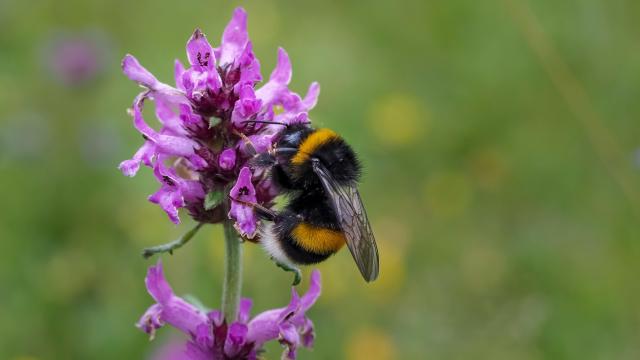The bumblebee’s days in Europe might be numbered. In new research out this week, scientists predict that as many as three-quarters of bumblebee species in the region will experience substantial population decline and territory loss over the next several decades due to manmade problems like climate change. While there is hope that these vital pollinators can still find refuge in certain areas, even that isn’t certain, the authors say.
Bumblebees are insects belonging to the genus Bombus, and there are over 250 known species of them worldwide. Like other bees, they play an important role in pollinating wild plants and agricultural crops, especially in the Northern Hemisphere where they’re most abundant. But bumblebees as a whole have been facing a population crunch in Europe, North America, and Asia for decades. There are several reasons for this decline, but they include habitat loss, climate change, and the spread of dangerous diseases.
In this new study, published Wednesday in Nature, scientists in Belgium have tried to figure out the future of bumblebees in Europe. To come up with their projections, they analyzed relevant data as far back as 1900 collected across most of Europe. They then created models that tried to account for various scenarios of how the climate and the use of habitable land for bumblebees will change over time.
Under the most likely scenarios, the team estimated that many European bumblebees currently classified as “Least Concern” species—species not facing any imminent threat—will begin to decline within decades. Anywhere from 38% to 76% of these species are projected to lose at least 30% of their habitable land by 2061 to 2080, as compared to their current range from 2000 to 2014. And bumblebees living in the Arctic and highly elevated mountainous regions are in even more trouble. These species are projected to lose at least 90% of their territory by then, placing them on the fast track to extinction.
Many of these species might be able to recover in parts of Scandinavia—a possibility that the researchers found across all the scenarios they modelled. But that future isn’t guaranteed either, they warn, since it’s possible that other dangers to the bees’ environment not accounted for by the team’s models could still emerge.
More research is needed to better understand the specific ways that climate change and habitat loss will affect bumblebee populations, but the overall takeaway is clear, the authors say: The fate of the world’s bumblebees is quite literally in our hands.
“Our results underline the critical role of global change mitigation policies as effective levers to protect bumblebees from manmade transformation of the biosphere,” they wrote.
